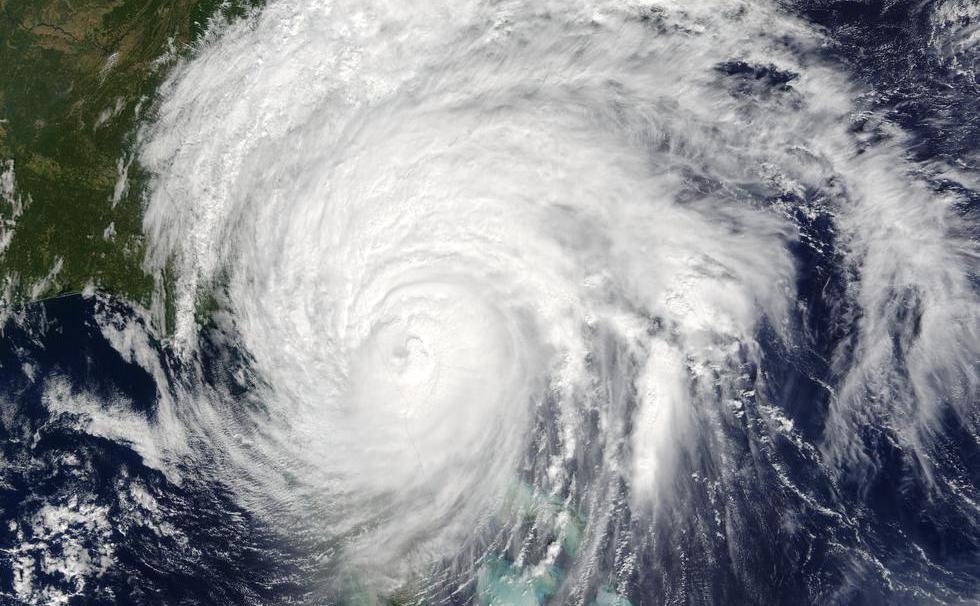
Opinion: Climate change is not a future threat, it’s a present danger
March 27, 2023
By Rob de Pruis
 Photo: NASA
Photo: NASA Insurers in Canada and worldwide have a long history of raising awareness of the need to adapt to the increasing risks we face as a result of a changing climate. Over a decade ago, Insurance Bureau of Canada (IBC), which represents the majority of home, car and business insurers in Canada, made adapting to climate change a national strategic priority. Today, we continue to aggressively advocate for a whole-of-society approach that recognizes that governments, emergency management organizations, the insurance industry and the public all have a role in addressing the challenges we face.
The most important message IBC continues to communicate is that the risks posed by climate change are not a future threat; they are a present danger.
Protecting Canadians from the impacts of climate change takes more than reducing emissions. We also need to protect our communities now from the ever-increasing severe weather events, such as floods and wildfires. Immediate protection. Long-term change. Together they make climate change action work.
Consider 2022. Severe weather across the country resulted in insured losses of roughly $3.1 billion, according to Catastrophe Indices and Quantification Inc. (CatIQ). Last year now ranks as the third-worst for insured losses in Canadian history.
Average annual insured losses from natural catastrophes have grown 164 per cent when compared to the last 20 years – from $959 million between 2003 and 2012, to $2.53 billion between 2013 and 2022. In addition, the federal government’s budgeted payments to the provinces for recovery assistance after a natural disaster have grown an alarming 466 per cent, from $305 million in 2004 – 2005 to nearly $1.73 billion in 2023-2024.
Three of the most costly years for insured losses have occurred in the last five years.
The facts speak for themselves and underpin the need for action to protect families and businesses.
But everyone needs to take action. Protection starts with ensuring that you have the right conversations with your insurance representative, the right insurance information to ensure you are protected, and the right insurance policy that protects your financial resilience.
Are you protected?
When facing a wildfire, flood or other type of disaster, Canadians rely on police, firefighters, paramedics and other first responders for immediate help. But what happens after these first responders have done their jobs? Canada’s home, car and business insurers are there to help, by contacting victims, responding to claims, coordinating the industry’s response and ensuring that their customers get back on their feet as quickly as possible.
An insurance policy provides peace of mind and financial resilience from severe weather. But not all policies are the same. Since 2015, many Canadian insurers have been offering homeowners overland flood insurance. This optional product can be added to a standard home insurance policy to provide financial protection from the increasing frequency and severity of flooding. Commonly, this coverage is combined with sewer backup coverage, which is also optional. However, after a flood, many people are surprised to find out they aren’t covered for flood or sewer backup under their standard home insurance policy.
IBC offers a wide range of resources to help consumers understand a home insurance policy, various perils and types of coverage. As well, it offers tips to mitigate risk to private property. These resources are available at www.ibc.ca/on/home. It’s important to speak with your insurance representative. They are the best resource for ensuring you have the right coverage.
Unfortunately, in many areas of Canada that are at high risk of flooding, flood insurance is unavailable. Insurers have been working with federal and provincial governments for over five years to design a national high-risk flood insurance program to address Canada’s greatest natural catastrophe risk head-on. This national flood program would speed up recovery and rebuilding for displaced families and businesses in flooded communities. It would also reduce unplanned disaster costs for the federal government, and ultimately, taxpayers.
Canada needs decisive action to reduce damage and risk to homes by better understanding where and how to build or rebuild, or when to relocate. At the same time, Canada needs affordable flood insurance to protect those at risk while reducing the financial burden on taxpayers. Most G7 countries already have such a program in place.
Canada’s insurers are ready to partner with federal and provincial governments to set up a program for affordable flood insurance. Its implementation is the single-most important step Canada can take to prepare for the impacts of climate change.
 Rob de Pruis is the national director, consumer and industry relations, with the Insurance Bureau of Canada. In his 30 years in the insurance industry, Rob has held various senior leadership positions in claims and risk management at some of Canada’s leading insurance companies.
Rob de Pruis is the national director, consumer and industry relations, with the Insurance Bureau of Canada. In his 30 years in the insurance industry, Rob has held various senior leadership positions in claims and risk management at some of Canada’s leading insurance companies.
Print this page